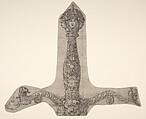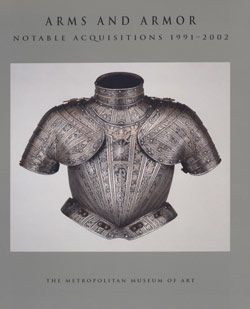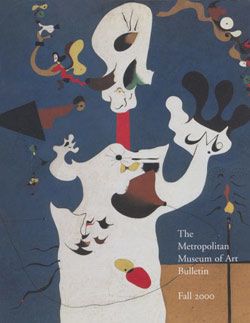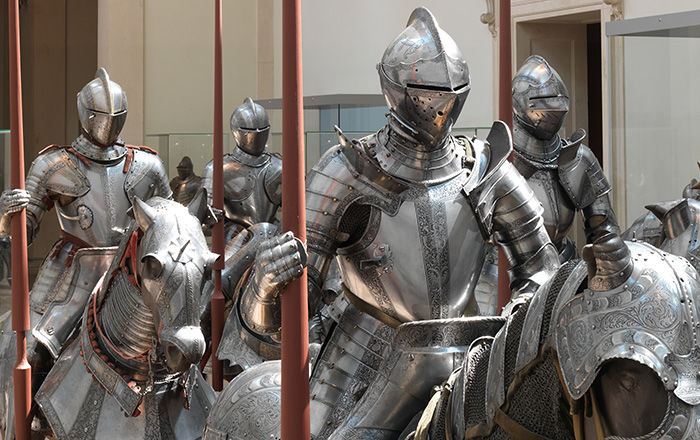Design for a Sword Hilt
Not on view
Original designs for Renaissance swords are exceptionally rare, although notable examples by such reknowned artists as Hans Holbein the Younger and Giulio Romano are preserved. Previously unrecorded, the present drawing is a significant addition to this small corpus and is a work of art in its own right. The style and iconography point to Nuremberg and possibly to Peter Flötner (ca. 1486–1546), one of that city’s most versatile artists. Of robust proportions, the hilt was presumably intended as a side arm to be executed in chased silver or gold. The pommel is conceived in the round with four female heads beneath an imperial crown, while the grip is embellished with a double-headed imperial eagle incorporated into a classical trophy of arms. The guard, formed of undulating branches of acanthus leaves and scrolls, is asymmetrical, one quillon ending in a shield-bearing demi-lion and the other in a Janus head. A lion's head at the intersection of the quillons anchors the composition.
The design is novel and has strong Italianate features, hallmarks of Flötner's oeuvre. The trophies in particular recall one of the artist's woodcut designs for a dagger grip. The distinctive crowned pommel, on the other hand, is virtually identical to one in the design for a sword of Emperor Charles V that is dated 1544 and ascribed to the celebrated Nuremberg goldsmith Wenzel Jamnitzer (1508–1585). The present drawing, however, reflects none of the Mannerist aesthetic of Jamnitzer's art and is clearly by a different hand and probably of slightly earlier date. The presence of the imperial iconography, on the other hand, suggests that it too was created for Charles V.
This image cannot be enlarged, viewed at full screen, or downloaded.



